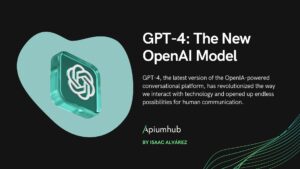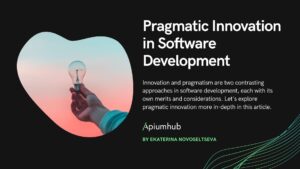Table of Contents
This month Katrina Logie from People on the Grid invited me to the Tech Tribe event to pitch Apiumhub and be part of the discussion: “ Future of technology in education ”. I found this event very interesting and it inspired me to write an article about it:
Tech Tribe event: Future of technology in education
Tech Tribe is a community with the vision to share knowledge through interactive events that include panel and roundtable discussions, workshops that combine multi-disciplinary talent, and thought speakers who inspire, educate & bring people together.
This time there was a panel discussion with 4 inspiring thought leaders in their field:
1.Neus Lorenzo – Head Education Inspector Generalitat de Catalunya
2. Sven Huber – Founder & CEO Boolino
3. Maria Gomez – Market Tech Principal ThoughtWorks
4. Sebastián Barajas – Founder & CEO Ubiqum Code Academy
And there were short presentations by Apiumhub, Le Wagon, and TRAGL the Global Translator where they shared their initiatives in terms of technology, innovation, and education.
There we introduced our new service: Apium Academy and explained why we decided to launch it. Basically, as there is currently a problem of finding a highly qualified developer for a reasonable price, a lot of startups and big enterprises were asking Apiumhub for a training opportunity. And with the objective of not just getting the talent, but growing it and scaling it, we launched our own “Academy”. With the help of our renowned software architect Christian Ciceri and other highly qualified experts from our team, Apiumhub gives personalized training, and theoretical and practical tasks based on real projects, ensuring their clients have talents that they need.
I really liked the event, all speakers were really involved in this field and the panel discussion generated a lot of interesting topics, also it made me think a lot about this topic and I decided to write this article, sharing my opinion about this topic.
For me, it is clear that technology will play a central role in our lives, therefore the education material and the education methods should be changed. Let’s see what the future of technology in education will look like and what possibilities we have nowadays.
Future of technology in education: statistics & facts
Let me share with you some interesting facts about the future of technology in education:
Research by the World Economic Forum estimates that 65% of children entering primary school will find themselves in occupations that today do not exist. Isn’t it scary?
Nowadays, soft skills are more valuable than hard skills for one reason: everything changes so fast, that your ability to adapt to changing circumstances, continuously learn new trends, think systematically, and be proactive – these are the skills that are normally valued the most now.
At the same time, 90% of organizations currently have an IT skills shortage, while 75% of educators and students feel there is a gap in their ability to meet the skills needs of the IT workforce. To prepare the talent needed for the digital economy, education must adapt as fast as the demand for IT skills is growing and evolving.
Technology has greatly expanded access to education and given enormous opportunities for teenagers to start their own startups before even they turn 18. Just by knowing how to code, they can program their website and start doing their business. Moreover, now all information that you need is available online and you have online forums, where you can actually ask advice of the professionals, get access to case studies and start self-education.
In medieval times, books were rare and only an elite few had access to educational opportunities. People had to travel to centers of learning to get an education. Today, massive amounts of information are available at one’s fingertips through the Internet. Opportunities for communication and collaboration have also been expanded by technology. The walls of the classrooms are no longer a barrier as technology enables new ways of learning, communicating, and working collaboratively. Now, students can learn about the Arctic by following the expedition of a team of scientists in the region, reading scientists’ blog posting, viewing photos, e-mailing questions to the scientists, and even talking live with the scientists via a videoconference. Students can collaborate on group projects using technology-based tools such as Google Docs, Trello, etc.
In the traditional classroom, the teacher is the primary source of information, and the learners passively receive it. This model of the teacher has been in education for a long time, and it is still very much in evidence today. However, because of the access to information and educational opportunity that technology has enabled, in many classrooms today we see the teacher’s role shifting to the “guide on the side” as students take more responsibility for their own learning using technology to gather relevant information. Schools and universities across the country are beginning to redesign learning spaces to enable this new model of education, foster more interaction and small group work, and use technology as an enabler. The future of technology in education is helping teachers to expand beyond linear, text-based learning and to engage students who learn best in other ways. Its role in schools has evolved from a contained computer class into a versatile learning tool that could change how we demonstrate concepts, assign projects and assess progress.
Also, the future of technology in education is to improve communication. Regions that were difficult to reach such as places in sub-Saharan Africa are now starting to be accessible through eLearning. Tutors can lecture learners over long distances and scholars can achieve their academic papers through eLearning. Also, students that feel like studying from home can now do it. The advancement of information technology in education has improved research. There are very many online libraries that assist teachers and students with comprehensive reading materials. Teachers and lecturers are also able to post their work online for their students to read.
Future of technology in education: examples & Possibilities
- Social media in education – allow learners and educators to post thoughts, ideas, and comments in an interactive learning environment. Also, students can follow influencers and learn from their posts.
- Ipads & computers – technology helps students be more responsible. Owning their own device or borrowing the school’s devices gives students the opportunity to improve their decision-making skills as well as take ownership of a valuable and often times expensive device.
- Better Simulations and Models – digital simulations and models can help teachers explain concepts that are too big or too small or processes that happen too quickly or too slowly to demonstrate in a physical classroom. Other simulations the organization is developing include software that allows students to experiment with virtual greenhouses in order to understand evolution, software that helps students understand the physics of energy efficiency by designing a model house, and simulations of how electrons interact with matter.
- Global Learning – at sites like Glovico.org, students can set up language lessons with a native speaker who lives in another country and attend the lessons via Skype, hangouts, etc. Learning from a native speaker, learning through social interaction, and being exposed to another culture’s perspective are all incredible educational advantages. Also, podcasts are another popular learning method, with hundreds of free educational programs now available online.
- More efficient assessment – teachers can collect real-time assessment data from their students. When the teacher gives out an assignment, she or he can watch how far along students are, how much time each one spends on each question, and whether their answers are correct. With this information, a teacher can decide what concepts students are struggling with and can pull up examples of students’ work on a projector for discussion.
- E-books – a digital textbook is a PDF on a tablet that students can carry around and now there is no need to carry five textbooks anymore. It’s all digital. What used to take hours in the library to find, now students find instantaneously.
- Epistemic Games – commercial game-like simulations that put students in roles like city planners, journalists, or engineers and ask them to solve real-world problems. In one game, students are high-powered negotiators who need to decide the fate of real medical controversy. In another, they must become graphical artists in order to create an exhibit of mathematical art in a particular style, etc. Creative professionals learn innovative thinking through training that is very different from traditional academic classrooms because innovative thinking means more than just knowing the right answers on a test. It also means having real-world skills, high standards and professional values, and a particular way of thinking about problems and justifying solutions. Epistemic games are about learning these fundamental ways of thinking in the digital age using technology.
- Students database and results tracking – teachers are able to track individual progress, and are encouraged to identify learning objectives and differentiate instruction based on the needs of their students. Also, “My dog ate my homework” just won’t work anymore, everything is saved on the cloud. Other than that, students are able to check their grades immediately in the digital diary. Basically, students will each have a digital portfolio where they store all of their projects, assessments, and notes.
- Interactive textbooks & case studies – the way that we think of textbooks is completely changing. It is no longer limited to merely text and pictures. Today’s textbooks often have web-based sites that include assessments, animations, additional materials, videos, and other materials to support the learning of new content. Normally students have questions after reading a material and they can answer them in an interactive way.
- Digitalization of everything – students don’t need to pass notes in class anymore. And have their room full of notebooks, books, and papers. Now everything is available online.
- Extended classroom communities – technology facilitates extending classroom community by using web-based platforms like Edmodo or others. Teachers and students can use this platform to discuss homework, post assignments, and interact with peers as they work on projects.
- Flexibility and online learning – it is now easy for anyone to learn at their own pace, rather than being forced to adhere to strict timelines. I think, that the future of technology in education is about making it possible for people to learn from any place in the world. Online learning means that people can learn at varying paces, depending on their ability and the amount of time that they are willing to devote to their learning effort. Given learning materials are delivered to learners online, learners can schedule their learning timetables as they wish and submit homework and exams online.
- Making learning fun again – Teachers can now use videos, animations, and other forms of content to enhance the process of learning. Nowadays, with the help of technology, it is now common for learners and teachers to use games as a way of enhancing the process of learning and teaching. As a result of the use of various forms of content, learning, and teaching are now fun and more meaningful than they way it was in the past.
- Cost Reduction – technology has contributed to significant reductions in the costs of accessing education. Everything is available online now.
- Improved student-teacher Interaction – more and more teachers are now using technology to keep in touch with their students, for example, e-mails and services like Dropbox that allow you to upload and share content with a large number of people.
- Video Games – simulating real-life problems, video games can bring about behavioral changes in students by making them more goal-oriented. Gaming models not only provide a wide range of information but also initiate students to be problem-solvers.
- Lifelong Learning – the future of technology in education is also about revolutionizing education by normalizing lifelong learning. Online learning is a great way to facilitate today’s knowledge-driven society and the ongoing demands for continuous professional development. The nature of employment has changed, and keeping one job for life is no longer expected. As a result of globalization, educational institutions around the world are now integrating technologies into all elements of their courses. Online education has become part of mainstream teaching and learning since students now have access to a wide range of increasingly impressive online resources.
- Virtual reality is a hot topic in education. With brands such as Oculus, Samsung, and Google innovative learning resources are now available, capable of immersing students in their chosen subject.
- Classes available online + live streaming – schools can create private channels and upload classes video on youtube, so that students who are sick, can watch them from home and ask questions in real-time.
- Differentiate assignments to fit students’ personal learning styles – they are no need to assign a project like “write a book report using MS Word” or “create a slideshow in PowerPoint”. Now, students receive the “book report” assignment and make their own determination of how best to communicate their thoughts, be it audio, visual, written, musical, video, or artistic. As long as they fulfill the requirements of the project, the delivery format will be up to them. Like this students can find their passion, develop their strengths and polish the skills that they will need for their future.
Nowadays, students become more and more involved in forming their own education. In 10 years, students will incorporate so much independence into their learning process, that mentoring will become fundamental to student success. And teachers will form a central point in the jungle of information that students will be paving their way through. I really believe that the future of technology in education is about adapting to the fast-changing world, giving students an opportunity to choose their own way of learning, combining theory and practice, and always taking into account the current demand of the market.
Don’t forget to subscribe to our monthly newsletter here.
If you found this article about the future of technology in education interesting, you might like…
- Tech tools for training companies
- Paraphrase machine
- Top business blogs to read
- The future of education technology
- 4 ways technology revolutionizing the education industry
- Human-centered innovation
- Top smart city projects to watch
- Blockchain technology: use cases, statistics, benefits, startups & events
- Barcelona; is one of the best smart cities in Europe
- Disruptive innovation to track
- The era of unicorns
- Top 20 promising startups in Barcelona
- IOT Projects that may Change the world
Author
-
Ekaterina Novoseltseva is an experienced CMO and Board Director. Professor in prestigious Business Schools in Barcelona. Teaching about digital business design. Right now Ekaterina is a CMO at Apiumhub - software development hub based in Barcelona and organiser of Global Software Architecture Summit. Ekaterina is proud of having done software projects for companies like Tous, Inditex, Mango, Etnia, Adidas and many others. Ekaterina was taking active part in the Apiumhub office opening in Paseo de Gracia and in helping companies like Bitpanda open their tech hubs in Barcelona.
View all posts













5 Comments
PrasantaShee
Technology has and will play a vital role in transforming education sector and taking it to next level. Technologies like video conferencing are being rapidly adopted by educational institutions globally for conducting online classes, online training, conducting online lectures etc. Tools like webex, R-HUB HD video conferencing servers etc. are widely used by educational institutions worldwide for the same.
MobiLock MDM for Education
Technology has completely changed the landscape of education. Technology in education is gaining importance and teaching imparted in more interactive, productive and scientific. Educational institutes are encouraging more use of mobile learning devices in form of tablets, laptops etc. However, managing and securing the devices is a crucial factor and advanced cloud-based technologies like Mobile Device Management for education is helping to easily manage and secure student devices through a unified portal. Educational institutes can manage what students can access and what they cannot. MDM solution has enabled educational institutes to adopt technology with much ease.
amirnajamsethit
Nice article. I enjoying and i like your thoughts.
Kermit Torello
Many thanks for sharing this wonderful article. It’s seriously helped me.
Shiela
The only thing that is of considerable importance is that educators and students should adopt and understand how to use instructional technologies. Thus, I believe that the future of education and its success will not be entirely based on technology, but on how educators can utilize tech to their advantage in the classroom.